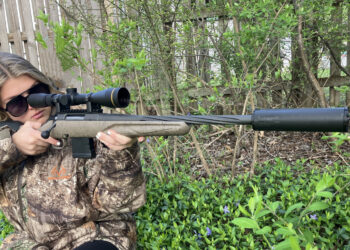By Robert Bruce
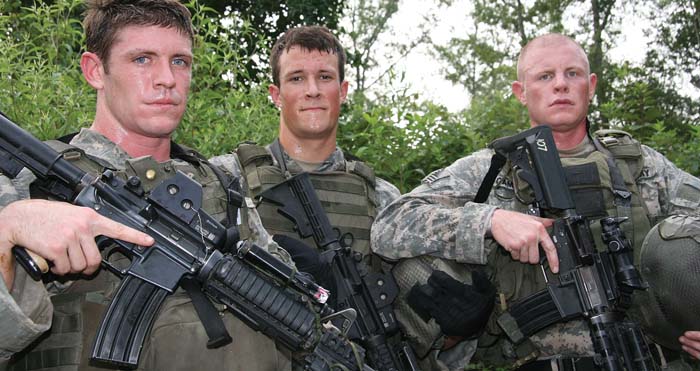
“You’ve got Rangers all over … doing the exact same thing for God and country, that never see each other. When we go to fight the war we fight in small elements. It’s a rare opportunity you get to see your brethren and take time to get to know one another and celebrate all that you’ve done….” Major Rob Schultz of Headquarters, 75th Ranger Regiment, in a USASOC news release
When nearly a thousand of your best buddies drop in one evening for a visit, you can bet one helluva party is gonna follow.
This is just what happened on the 6th of August, 2007 at historic Fort Benning, Georgia, home of the US Army’s Infantry Branch and headquarters of the 75th Ranger Regiment. The next three days were filled with all the rugged Ranger-theme competitions, events and activities that have come to characterize Ranger Rendezvous over a period of twenty years. Not a party in the way most folks define the word, but an officially sanctioned biennial gathering of elite US Army Rangers past, present and even some likely future Rangers.
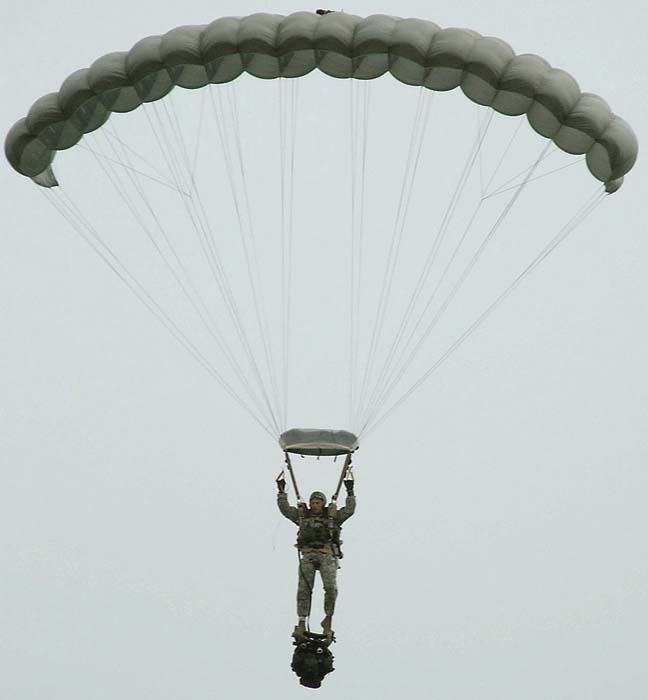
Intended to foster esprit de corps within this proud warrior brotherhood that traces its lineage back more than three centuries, well before Robert Rogers’ Rangers of the French and Indian War, the Rendezvous also provides outsiders with unique opportunities. Because most Rendezvous activities are open to the public, it is a rare chance for non-Rangers to get a close look at these necessarily secretive men, along with their highly lethal weapons and exotic, specialized equipment.
So SAR made attendance a priority, courtesy of an invitation from the 75th Ranger Regiment and personally escorted by Carol Darby-Jones, US Army Special Operations Command’s Public Affairs Officer, as well as Tracy Bailey, the Regimental PAO. Thanks to special arrangements by these friendly and energetic ladies, we were privileged to get right in the middle of the action and to speak “on the record” with some selected Rangers.
Vertical Envelopment
Ranger Rendezvous 2007 kicked off on Monday evening with a spectacular mass tactical airborne operation over Benning’s Fryar Drop Zone. Not for show, mind you, but for tangible training value to everyone involved including highly professional USAF aircrews and all varieties of Airborne Rangers from the Regiment’s 1st and 3rd Battalions. 2nd Battalion, with home base at Fort Lewis, Washington, is currently deployed at undisclosed locations overseas in support of Operation Iraqi Freedom.
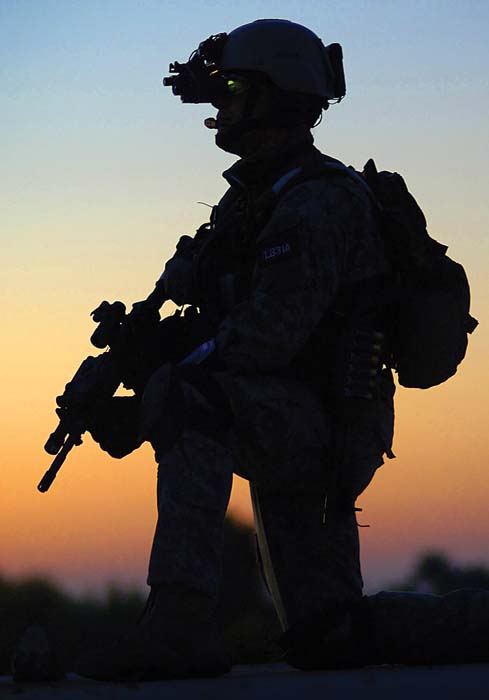
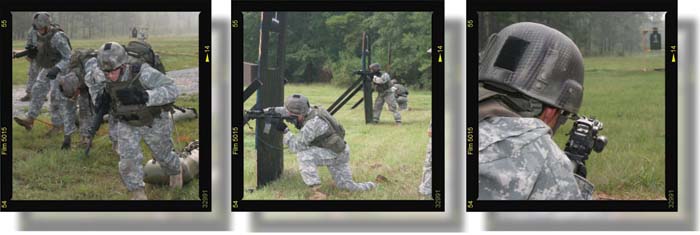
Diving headfirst out of a turboprop MC-130P Hercules Combat Shadow provided by the US Air Force’s 9th Special Operations Command, Ranger Pathfinders HALO’d in under crescent shaped ram-air chutes nimbly steered to pinpoint landings, quickly setting up ground-to-air communications. It was their job to begin directing waves of the Air Force’s giant C-17 Globemaster transports, as well as more C-130s, each crammed with Rangers in full battle gear. Flying at precise intervals and trailing at altitudes set like ascending stair steps, the lumbering aircraft efficiently disgorged more than 700 Rangers in short order, filling the hot and thickly humid evening air with translucent green canopies.
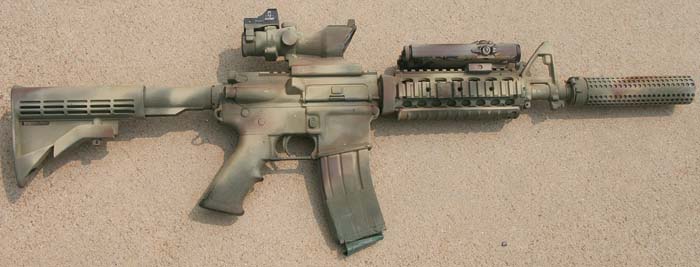
Once on the ground, the Rangers lost no time rolling up their parachutes and moving out smartly to designated rally points at the perimeter of the enormous DZ, just like in a real combat operation. Sure, doctrine calls for all this to be done under cover of darkness, but where would they get enough night vision goggles for the enormous crowd of spectators and news media reps who all wanted to see the drop?
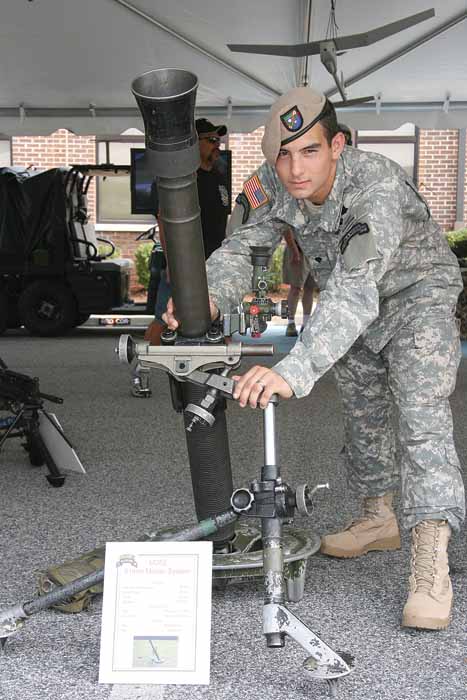
Regimental Run
The next day started in typical Ranger fashion at the proverbial “O Dark-Thirty” with a Regimental formation on Peyden Field. Gone are the bad old days of running in fatigues and jump boots. Uniformly clad in distinctive black shorts and RANGER tee shirts with running shoes of their personal choice, companies and battalions formed up in the steaming pre-dawn darkness for the prescribed limbering up exercises then took off at a faster than double time pace for a three mile run. The long, living ribbon of Rangers snaked through Benning to the sound of traditional cadence calls, reinforcing warrior spirit in the chanters and providing something of a warning to those who would foolishly tangle with these superbly conditioned and highly motivated fighters.
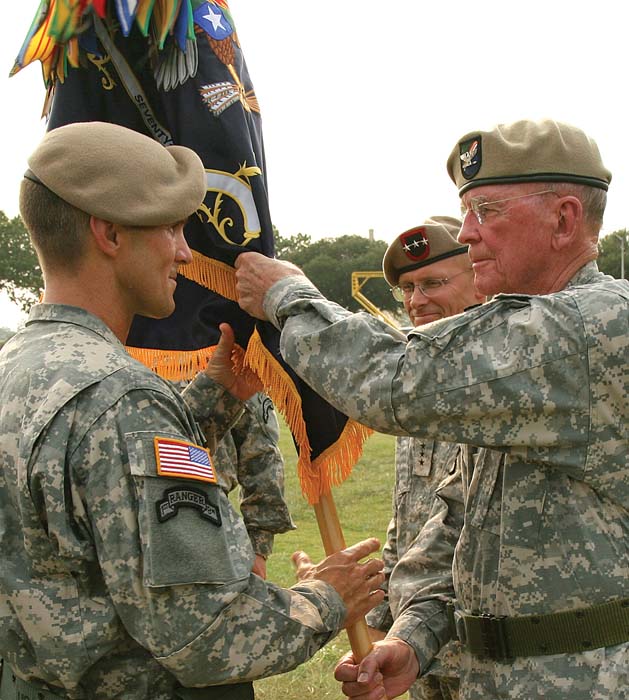
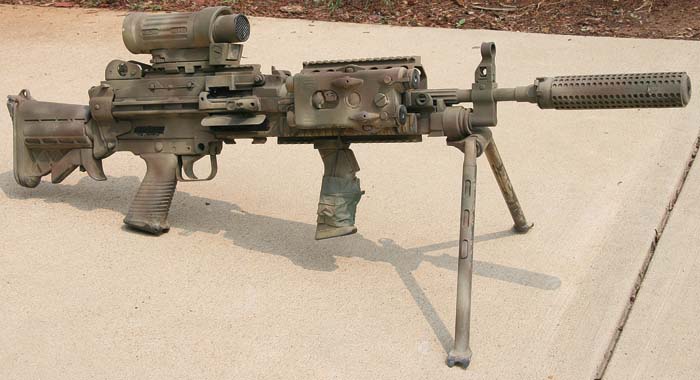
The Army’s Premier Raid Force
By 75th Ranger Regiment Public Affairs Office
The 75th Ranger Regiment is a lethal, agile and flexible force, capable of executing a myriad of complex, joint special operations missions in support of US policy and objectives. Today’s Ranger Regiment is the Army’s premier raid force. Each of the three geographically dispersed Ranger Battalions is always combat ready, mentally and physically tough and prepared to fight the Long War. Their capabilities include air assault and direct action raids seizing key terrain such as airfields, destroying strategic facilities, and capturing or killing enemies of the Nation. Rangers are capable of conducting squad through regimental size operations using a variety of infiltration techniques including airborne, air assault and ground platforms. The Regiment remains an all-volunteer force with an intensive screening and selection process followed by combat-focused training. Rangers are resourced to maintain exceptional proficiency, experience and readiness. The 75th Ranger Regiment is a proud unit and a team of teams serving the nation – Rangers lead the way.
Run, Sweat, Shoot, and Drag
There was no rest for the weary afterward, at least among those who were competitors in the Stress Shoot. Arguably the most Ranger-like event of the gathering’s several competitions, this demanding test of physical conditioning and marksmanship skills harshly measures each team’s performance under simulated combat conditions.
Because the typically brutal Georgia summer heat and humidity were forecast to top 100 degrees by noon, the Stress Shoot began way earlier than scheduled. By 0800 hours, many of the Regiment’s three man teams had already completed the prescribed run, sweat, shoot and drag.
Our Ranger host for this event, Sergeant Myles Grantham of Headquarters and Headquarters Company, 3rd Battalion, told us that the timed and scored event has its start point way back in the Regimental area, a mile from where we were on Farnsworth Range, site of the live fire portion. The clock starts on each team in turn as they take off at a dead run, burdened by the “battle rattle” of weapons, body armor and gear.
Not surprisingly, all the teams we observed arrived at the range with lungs heaving and sweat pouring, moving right up to the first set of a series of three plywood barriers simulating various typical fighting positions. Closely supervised by fellow Rangers acting as lane coaches, they slammed magazines into their special M4A1 SOPMOD carbines, now lethally loaded with standard green tipped ball 5.56mm M855 ammo. Then, taking up required shooting stances from standing to prone, they do their best to put well aimed shots into stationary E-Type silhouettes set a various distances.
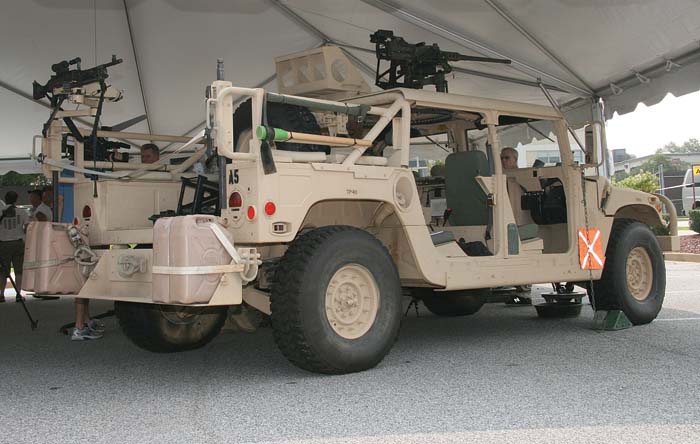
It’s up to each Ranger to decide what day sight he wants to use from among the standard issue types, Grantham noted, including traditional iron aperture and post, no-magnification electronic red dot, or the four power ACOG. Each has advantages and disadvantages given the nature of the shooting conditions and we saw all types in use.
All members of the team must have finished firing the allotted number of rounds and cleared their weapons before they are allowed to run forward, pressing their simulated assault from the next set of plywood positions. Grantham pointed out the tough tradeoff between elapsed time and hits on target, but also noted the core Ranger value of teamwork as a major factor. Some are fast and others are precise. Together they get the job done.
Immediately after the last rounds are fired and magazines removed, each Ranger’s carbine gets a cleaning rod down the barrel to verify it as clear and safe. The team runs to the side of the range and each man harnesses up the pull ropes of a SKEDCO drag bag, heavily burdened with several 5 gallon cans of water to simulate the weight of a wounded comrade. The finish line is 50 meters away and the pull requires a tremendous amount of leg strength and stamina. The unrelenting stopwatch doesn’t halt until the last of the three makes it across the line.
We are pleased to announce that the winning team for this year’s Stress Shoot represents C Company, 3rd Battalion, 75th Ranger Regiment. Their hard work and skill were rewarded with a trophy.
Guns and Gear
Early completion of the Stress Shoot worked out fine for us because we got extra time at the Ranger Open House, set up outside the impressive headquarters building for the 75th Ranger Regiment. This display was a 24 karat gold mine for the specialized guns and gear that are usually hidden from public view and jealously guarded from the prying eyes of the news media and other suspected or known adversaries.
But, under the watchful eye of USASOC PAO Carol Darby-Jones, we were given nearly free rein to photograph the real stuff on display and to talk with the stalwart Rangers who had brought their workplace tools to the show. Our earlier conversations back at the Stress Shoot with Ranger Sergeant Myles Grantham, a combat-experienced sniper, sent us on a beeline for the precision rifles table, ably manned by a pair of his sniper buddies from HHC of the 3rd Battalion.
Sergeants Jake Attebery and Staff Sergeant Robert Shoup good-naturedly displayed their .50 caliber Barrett M107, a 7.62mm Knight’s MK11 Mod 0, and the exotic MK13, custom built around a Remington 700 bolt action receiver chambered for the undeniably efficient .300 Win Mag cartridge. Their day sights, night sights, suppressors, spotting scopes, and plenty more were right there on display, prompting more than one visiting Ranger veteran to offer observations on how things have certainly changed for the better since way back when.
Less precise in application but far more lethal on a wider scale and longer range are the Regiment’s mortars, sized from 60mm to a whopping 120mm. This is all the Regiment has in the way of organic artillery, necessarily so given mobility requirements. If heavier firepower is needed then backup is usually supplied by various supporting aircraft that are part of a combined arms force tailored for particular missions.
The 40mm Mark 19 grenade machine gun, a veteran of the Vietnam War, has been recently replaced in the Regiment by the 40mm MK47 Advanced Lightweight Grenade Launcher, a high tech bomblet chunker boasting a computerized fire control system with integrated day and night sights for much greater first round and subsequent hit probability day or night.
Conspicuously absent from the display were the 84mm M3 Carl Gustav multipurpose recoilless rifle, the Javelin antiarmor system and the Stinger antiaircraft missile launcher. Each of these tactical tubes is uniquely suited for specialized tasks by the fast moving and hard-hitting Rangers, representing essential offensive and defensive capabilities for a wide variety of missions. It’s not as if there were secrets to keep as all are listed on publicly posted fact sheets.
The ubiquitous and highly regarded .50 caliber M2HB and 7.62mm M240B machine guns, standard throughout the US Armed Forces, were prominently mounted on a brand spanking new M1113 Special Operations Ground Mobility Vehicle. This is an even more robust and powerful version of the workhorse HMMWV, newly fitted with a turbocharged diesel engine and custom configured with plenty of extra stowage racks for all that ammo, fuel, water, food and gear needed in deep penetration raids.
Because both of the belt guns on the GMV are too heavy for efficient dismounted missions, today’s Rangers are blessed with a pair of machine guns that were developed by US Special Operations Command specifically for the Navy’s SEAL teams. Replacing the Army’s standard M249 SAW in the Regiment is the 5.56mm MK46, a smaller, lighter, more rugged and reliable upgrade of the same weapon. And for times when it is desirable to have a 7.62mm belt gun that can be carried by one man, the MK48 is now in the Ranger arsenal. Often called a “SAW on steroids,” the 48 is essentially a beefed-up version of the MK46 to handle the heavier-hitting, longer-ranging round.
Sidearms and shotguns were also laid out for inspection, inviting a closer look at the pairing of a standard 9mm Beretta M9 next to the unmistakably boxy profile of a Glock 19 sporting a day tactical light. Seems “certain Rangers” get the Glock – surprisingly chambered for the same puny 9mm round – while most others carry Berettas. Our guess is that this has something to do with reliability since terminal effects with GI issue ball ammo are the same. All this could change in the not too distant future when and if USSOCOM makes good on its on-again, off-again intent to find and field the best new handgun and cartridge combo.
Rangers are believed to be the only ones in the Army to have been issued the M1014 shotgun, originally intended to replace nearly all 12 gauge scatterguns in the US Armed Forces. No sign of the M1014 at the display but that’s OK because there was a really mean looking chopped down scattergun complete with Pachmayr Vindicator pistol grip, Picatinny rail on top and sidesaddle shell carrier. This ultra compact breaching blaster is one of the handiest versions we’ve seen of Remington’s superlative 870 slide action classic.
SCAR Sighting
Seems the Regiment is in the process of evaluating the 5.56mm FN SCAR-L, recently fielded with Navy Special Warfare units including elite SEAL teams. Someone thought it would be a nice touch to bring one of the test guns over for the Open House display; most likely because anything “new and improved” ought to be proudly shown.
The SCAR-L dispenses with the hot and dirty direct gas system of the M16 family in favor of a cool and clean gas piston.
If the 75th decides at some point to replace its M4s with SCAR-L, or the HK416, known to be in use by the Army’s officially non-existent Operational Detachment Delta, that will be BIG news throughout the US Armed Forces and beyond.
Commo Check
We’re gun guys, not real smart but at least smart enough to know that C3I – command, control, communications, and intelligence – are absolutely essential combat multipliers. Reluctantly leaving the weapons displays behind, we moved over to check out the really high tech stuff. Imagine joining the Rangers, going through all that parachute qualification, snake eating, mud crawling, and other character building qualification training, then getting assigned to sit behind a computer screen. Cushy job? Think again….
Sure, a high level Ranger operation uses a bunch of really impressive stuff like SATCOM rigs, hardened computers, whiz-bang digital battlefield displays, encrypted burst long range transceivers, and much more. But they’re designed to travel light, fast and rough, and be used in what is euphemistically known as “austere environments.” So your dream job as a Ranger REMF has the hard reality of freezing cold, blazing heat, driving rain, ravenous insects, cold MREs, round-the-clock operation with no sleep, and the very real possibility of getting your butt shot off while tapping on a keyboard. Still interested?
Our favorite high tech gear among the gadget goodies on display was the little RQ-11 Raven, a battery powered miniature spy plane that sends back radio-linked real-time video to a laptop computer. Its Ranger “pilot” uses a video-game joystick controller to fly the thing out for a bird’s eye peek at what the bad guys are doing, simultaneously sending the imagery to any of several levels of command. Yes, it’s been around for awhile and the Regiment has some other eye in the sky recon robots that they didn’t choose to reveal, but that doesn’t minimize its value in real-world operations.
Ranger Sports
While we were getting our guns ‘n gear fix in the shade of the canopy covered display, one helluva lot of Rangers were out “playing,” most in the direct sun and hundred degree heat. On athletic fields at various locations around the Regimental area groups of Rangers faced off in friendly but fierce competition, representing their units in traditional sports like football, softball and tug-of-war. All in a day’s work for these men who take tremendous pride in physical and mental toughness in any environment.
But the biggest crowds gathered later that afternoon in Hanger 301 at Lawson Airfield for the Combatives Tournament, a Ranger smackdown with all the ferocious intensity of Ultimate Fighting but geared toward motivating military warriors. While the Army has long promoted hand-to-hand combat training using a variety of martial arts techniques, Combatives takes the concept to its highest level. Instead of teaching specific techniques in a controlled situation, Ranger-style Combatives puts the emphasis on real fights between individuals. Yeah, they’re supposed to hold back just a little bit so as not to seriously injure each other, but few see much evidence of that.
Cheered on by nearly 2,000 spectators, Rangers in six weight classes tore into each other with relentless punches, kicks, elbows and choke holds. Winners emerged decisively when their opponents had been brought to the mat, sometimes bloodied but, amazingly, fit enough to fight again.
Sergeant Treybutt Hull, quoted in a USASOC news report from the Rendezvous, reflected on emerging as Regimental champion in the 140 pound weight class. “You know it’s all about farther, faster and fight harder!” the 1st Battalion Ranger said.
Honors and Ceremonies
While it is hard for outsiders to fully appreciate the importance of formal ceremonies to those in the military brotherhood, even clueless onlookers were moved by the solemnity and reverence that accompanied several events on Wednesday and Thursday. The first, recognizing outstanding accomplishments while assigned to the Regiment or providing it support, saw induction of seven Distinguished and three Honorary members of the 75th Ranger Regiment. This was soon followed by another to induct fifteen Distinguished and two Honorary members of the Ranger Hall of Fame.
Thursday, the last day of the Rendezvous, dawned with more of the same typically hot, muggy and hazy Georgia summer weather. The ultimate sacrifice paid by Ranger brothers of the distant, more recent and immediate past was honored that morning at the Ranger Memorial with the laying of floral wreaths, three precision volleys of blank fire, and somber reflection during the haunting and mournful bugle notes of “Taps.”
Finally, in the lengthening shadows of early evening at Sergeant Alvin York Field, the Regiment formed up for a Change of Command. There, precisely adhering to ceremony dictated by hundreds of years of US Army tradition and protocol, Colonel Richard D. Clarke accepted the Regimental Colors, taking command of the 75th Ranger Regiment following the distinguished service of Colonel Paul J. LaCamera.
Find Out More
No man can know with certainty what will happen in the 75th Ranger Regiment over the two years that will pass before Ranger Rendezvous 2009. But let there be no doubt that these brave and dedicated men are determined to uphold tradition and gather once again. We suggest the following internet references for detailed information on the Regiment and, at some point in the future, an announcement of dates and location of the next Rendezvous:
- 75th Ranger Regiment Official Website: www.benning.army.mil/75thranger/index.asp
- Ranger Recruiting: www.goarmy.com/ranger/index.jsp
- 75th Ranger Regiment Association: 75thrra.com
- US Army Ranger Association: www.ranger.org
Next Month
The US Army’s 75th Ranger Regiment, under operational control of the US Special Operations Command, is a unique combat asset, proven absolutely necessary and undeniably effective in a long list of wartime and covert missions. In the next issue we’ll take a close look at Ranger training, weapons and equipment.
| This article first appeared in Small Arms Review V12N1 (October 2008) |




